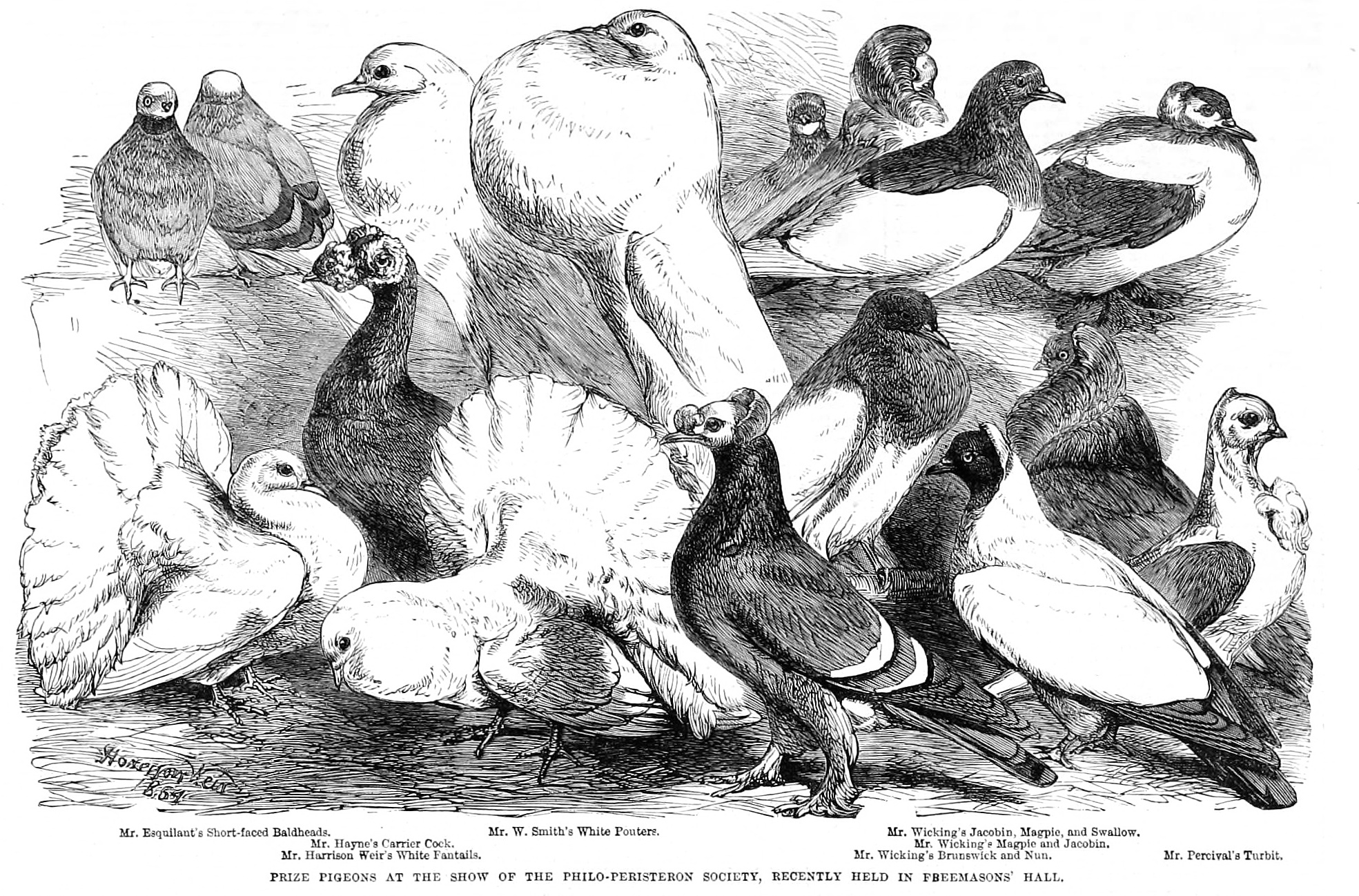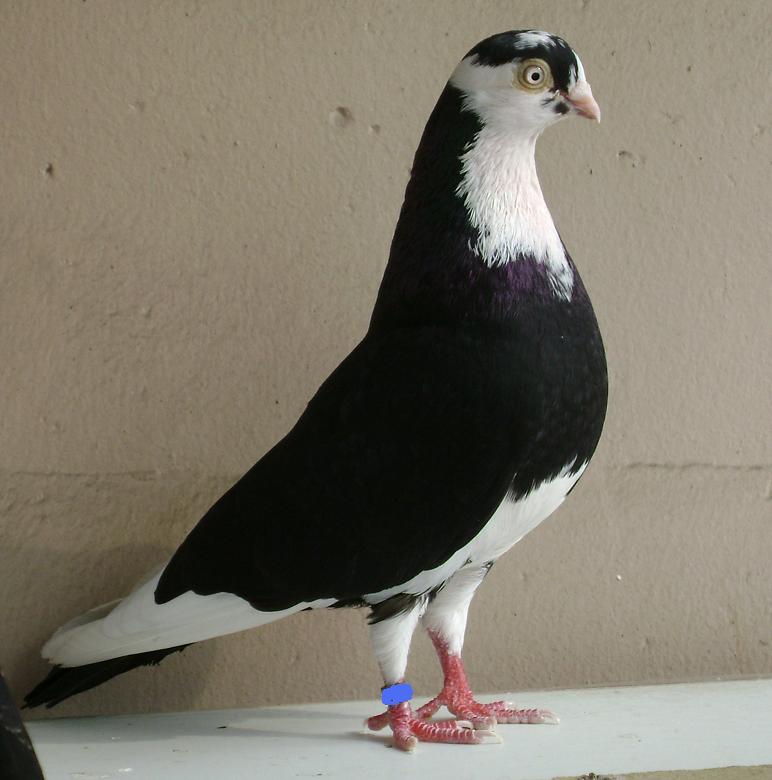|
Oriental Roller
The Oriental Roller is a breed of fancy pigeon developed over many years of selective breeding. Oriental Rollers, along with all other varieties of domesticated pigeons, are descended from the rock pigeon (''Columba livia''). Flying style The key hallmark of the Oriental Roller is its flying style. They show a variety of different figures in the air, which are single somersaults, double somersaults, rolling (a number of uncountable somersaults), rotation with open wings, nose dives, sudden change of direction during flight and very rarely axial turns. Some breeds fly up to 1000 m high, others stay in the air for several hours. The aerobatics that these Oriental Rollers perform are comparable to those of the Galatz Roller and Birmingham Roller pigeons. See also *List of pigeon breeds This is an alphabetical list of pigeon breeds. Pigeons and doves are members of the bird family Columbidae. Doves tend to be smaller and pigeons larger, although this distinction is not cons ... [...More Info...] [...Related Items...] OR: [Wikipedia] [Google] [Baidu] |
Breed
A breed is a specific group of domestic animals having homogeneous appearance ( phenotype), homogeneous behavior, and/or other characteristics that distinguish it from other organisms of the same species. In literature, there exist several slightly deviating definitions. Breeds are formed through genetic isolation and either natural adaptation In biology, adaptation has three related meanings. Firstly, it is the dynamic evolutionary process of natural selection that fits organisms to their environment, enhancing their evolutionary fitness. Secondly, it is a state reached by the ... to the environment or selective breeding, or a combination of the two. Despite the centrality of the idea of "breeds" to animal husbandry and agriculture, no single, scientifically accepted definition of the term exists. A breed is therefore not an objective or biologically verifiable classification but is instead a term of art amongst groups of breeders who share a consensus around what qua ... [...More Info...] [...Related Items...] OR: [Wikipedia] [Google] [Baidu] |
Fancy Pigeon
Fancy pigeon refers to any breed of domestic pigeon, which is a domesticated form of the wild rock dove (''Columba livia''). They are bred by pigeon fanciers for various traits relating to size, shape, color, and behavior, and often exhibited at pigeon shows, fairs and other livestock exhibits. There are about 800 pigeon breeds; considering all regional varieties all over the world there may be 1100 breeds. The European list of fancy pigeons alone names about 500 breeds. No other domestic animal has branched out into such a variety of forms and colours. Charles Darwin is known to have crossbred fancy pigeons, particularly the Ice Pigeon, to study variation within species, this work coming three years before his groundbreaking publication, ''On the Origin of Species''. Pigeon showing Pigeon fanciers from many different countries exhibit their birds at local, inter-state or national shows and compete against one another for prizes. One typical country show in Australia in 2008 ... [...More Info...] [...Related Items...] OR: [Wikipedia] [Google] [Baidu] |
Selective Breeding
Selective breeding (also called artificial selection) is the process by which humans use animal breeding and plant breeding to selectively develop particular phenotypic traits (characteristics) by choosing which typically animal or plant males and females will sexually reproduce and have offspring together. Domesticated animals are known as breeds, normally bred by a professional breeder, while domesticated plants are known as varieties, cultigens, cultivars, or breeds. Two purebred animals of different breeds produce a crossbreed, and crossbred plants are called hybrids. Flowers, vegetables and fruit-trees may be bred by amateurs and commercial or non-commercial professionals: major crops are usually the provenance of the professionals. In animal breeding, techniques such as inbreeding, linebreeding, and outcrossing are utilized. In plant breeding, similar methods are used. Charles Darwin discussed how selective breeding had been successful in producing change over ... [...More Info...] [...Related Items...] OR: [Wikipedia] [Google] [Baidu] |
Domestic Pigeon
The domestic pigeon (''Columba livia domestica'' or ''Columba livia'' ''forma'' ''domestica'') is a pigeon subspecies that was derived from the rock dove (also called the rock pigeon). The rock pigeon is the world's oldest domesticated bird. Mesopotamian cuneiform tablets mention the domestication of pigeons more than 5,000 years ago, as do Egyptian hieroglyphics. Research suggests that domestication of pigeons occurred as early as 10,000 years ago. Pigeons have made contributions of considerable importance to humanity, especially in times of war. In war the homing ability of pigeons has been put to use by making them messengers. So-called war pigeons have carried many vital messages and some have been decorated for their services. Medals such as the Croix de Guerre, awarded to Cher Ami, and the Dickin Medal awarded to the pigeons G.I. Joe and Paddy, amongst 32 others, have been awarded to pigeons for their services in saving human lives. Despite this, city pigeons toda ... [...More Info...] [...Related Items...] OR: [Wikipedia] [Google] [Baidu] |
Rock Pigeon
The rock dove, rock pigeon, or common pigeon ( also ; ''Columba livia'') is a member of the bird family Columbidae (doves and pigeons). In common usage, it is often simply referred to as the "pigeon". The domestic pigeon (''Columba livia domestica'', which includes about 1,000 different breeds) descended from this species. Escaped domestic pigeons have increased the populations of feral pigeons around the world. Wild rock doves are pale grey with two black bars on each wing, whereas domestic and feral pigeons vary in colour and pattern. Few differences are seen between males and females. The species is generally monogamous, with two squabs (young) per brood. Both parents care for the young for a time. Habitats include various open and semi-open environments. Cliffs and rock ledges are used for roosting and breeding in the wild. Originally found wild in Europe, North Africa, and western Asia, pigeons have become established in cities around the world. The species is abund ... [...More Info...] [...Related Items...] OR: [Wikipedia] [Google] [Baidu] |
Classic Almond Bred By Zeljko Talanga
A classic is an outstanding example of a particular style; something of lasting worth or with a timeless quality; of the first or highest quality, class, or rank – something that exemplifies its class. The word can be an adjective (a ''classic'' car) or a noun (a ''classic'' of English literature). It denotes a particular quality in art, architecture, literature, design, technology, or other cultural artifacts. In commerce, products are named 'classic' to denote a long-standing popular version or model, to distinguish it from a newer variety. ''Classic'' is used to describe many major, long-standing sporting events. Colloquially, an everyday occurrence (e.g. a joke or mishap) may be described in some dialects of English as 'an absolute classic'. "Classic" should not be confused with ''classical'', which refers specifically to certain cultural styles, especially in music and architecture: styles generally taking inspiration from the Classical tradition, hence classicism. ... [...More Info...] [...Related Items...] OR: [Wikipedia] [Google] [Baidu] |
Galatz Roller
The Galatz Roller or Galați Roller is a domesticated pigeon breed originating in Galați County, Romania. Because these pigeons perform air acrobatics when they fly, they became very popular among pigeon fanciers in both the country of origin and the rest of Europe, especially in Germany, the Netherlands and Belgium. The air acrobatics that these Galați Roller birds perform are comparable to those of the Oriental Roller and Birmingham Roller pigeons. Air acrobatics The air acrobatics include: * back somersaults (more than two consecutive back somersaults are called a "roll", hence the name "Galați Roller") * pirouettes (turns around the vertical axis) * screws (many pirouettes while flying downward) The answer to the question, "Why do the pigeons roll?" is controversial. One answer to this question could be this: Apparently there is a gene called the "ro" gene that controls the rolling/tumbling behaviour in pigeons. This "ro" gene sets the rolling behaviour to a degree fr ... [...More Info...] [...Related Items...] OR: [Wikipedia] [Google] [Baidu] |
Birmingham Roller
The Birmingham Roller is a breed of domesticated roller pigeon that originated in Birmingham, England. They were developed via selective breeding, for their ability to do rapid backward somersaults while flying. Rolling motion It is unknown why the Birmingham Roller and other roller pigeons tumble. While it is true that the birds do perform backward somersaults in flight, the exact neurological causes of the rolling behaviour are still unknown. This bird has a genetic inclination to flip backwards, provided adequate training, diet, and exercise. The spinning can appear to be so fast that the bird looks like a ball of feathers falling toward the ground. They recover from the spin and return to their flock, called a “kit” in competition. The pigeon continues to do the same acrobatics with regular frequency, often in unison with other birds in the kit. The frequency, depth, style, tightness of roll, and angle are all determined by careful and methodical breeding. The fli ... [...More Info...] [...Related Items...] OR: [Wikipedia] [Google] [Baidu] |





